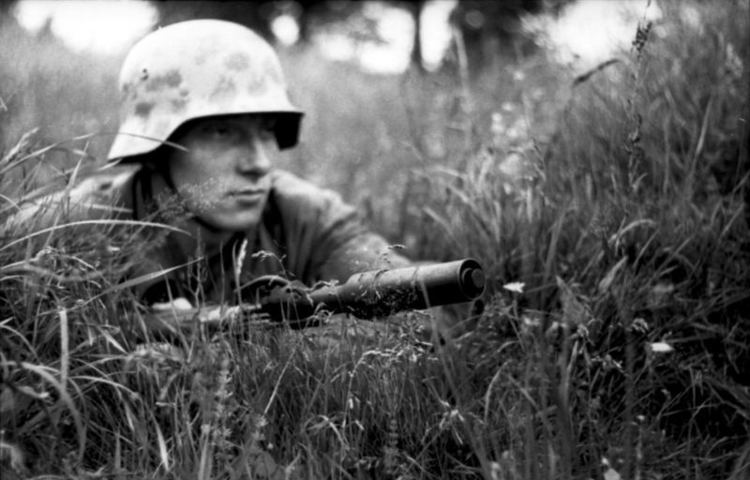 | ||
The Schiessbecher (German spelling: Schießbecher - literally "shooting cup") grenade launcher or Gewehrgranatengerät (literally "rifle grenade device") was used by German forces in World War II. It was introduced as of 1942 and based on rifle grenade launcher models designed during World War I. The Schiessbecher was intended to replace all previous rifle grenade launcher models.
The Schiessbecher rifle grenade launcher could be used against infantry, fortifications and light armored vehicles up to a range of 280 m (310 yd). For these differing tasks several specialized grenades with accompanying special propelling cartridges were developed for the Schiessbecher rifle grenade launchers. The rifle grenade propelling cartridges fired a wooden projectile through the barrel to the rifle grenade that upon impact automatically primed the rifle grenade.
The Schiessbecher had a short rifled barrel with a caliber of 30 mm (1.2 in) and a length of 250 mm (9.8 in). It weighed 750 g (26 oz) and could be attached to weapons chambered for 7.92×57mm or 7.92×33mm Kurz ammunition like the Karabiner 98k, Karabiner 98a, G98/40, StG 44 and FG 42. A rather complicated aiming device was mounted to the left of the original sights and allowed for aiming ranges from 0 of up to 250 m (270 yd) in 25 m (27 yd) increments. The Schiessbecher was produced until May 1944. The total production was 1,450,114.
